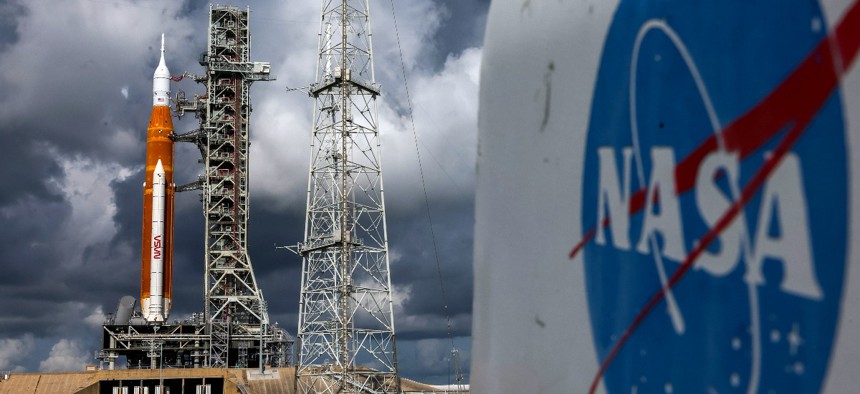NASA Needs to Improve Artemis Mission Guidance, Watchdog Says

NASA's Artemis I rocket sits on launch pad 39-B at Kennedy Space Center on September 02, 2022 in Cape Canaveral, Florida. Kevin Dietsch/Getty Images
The report found that NASA is following scheduling intended for individual programs, rather than full-blown missions.
After delaying the launch of Artemis I, the Government Accountability Office issued a report last week on NASA’s Artemis lunar program, finding the agency needs to take action to address challenges, such as by improving its schedule guidance for the Artemis missions.
NASA’s Artemis missions seek to return astronauts to the moon and eventually bring humans to Mars as part of a series of missions. NASA has committed billions of dollars to the Artemis missions that will go into the 2030s.
GAO noted that the guidance NASA is using for Artemis was “intended for individual programs, not missions.” The watchdog went on to explain that “missions integrate several programs together and require coordination across different NASA divisions and with contractors. Schedule guidance specifically for missions would help NASA coordinate integration activities, as Artemis missions will involve more programs over time.” As a result, the agency stated that NASA had no way to ensure it had consistent schedule management in place for Artemis. To address this concern, the agency recommended that NASA create mission schedule guidance to help “integrate the individual programs required for launch.”
GAO also emphasized NASA’s workforce challenges impacting the Artemis missions, such as ensuring its workforce is “sufficiently agile in size and mix and strategically shaped to provide a mix of skills to accomplish its missions.” As a result, GAO recommended that NASA address its workforce needs by utilizing workforce scenario planning to examine needs for the next five or more years.
In addition to the aforementioned recommendations, GAO urged NASA to conduct a risk analysis for Artemis II as soon as Artemis I is complete, while updating the risk assessment as needed and to create guidance for division-level schedule collaboration—like data sharing expectations—for Artemis III and later missions. NASA agreed with the GAO’s four recommendations.
GAO added that its recommendations will help NASA leaders make better-informed decisions for the Artemis missions.
Following the GAO’s report, the White House announced its plan on Friday to set up an initiative to help NASA and other agencies through space-related STEM initiatives that will bolster the next generation of the space workforce.
GAO’s most recent report comes after its 2021 report found that NASA faced numerous challenges for its Artemis missions.
NEXT STORY: Biden Spurs U.S. Biotechnology with New Order






